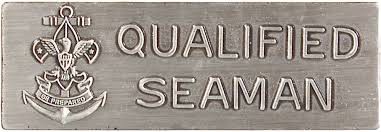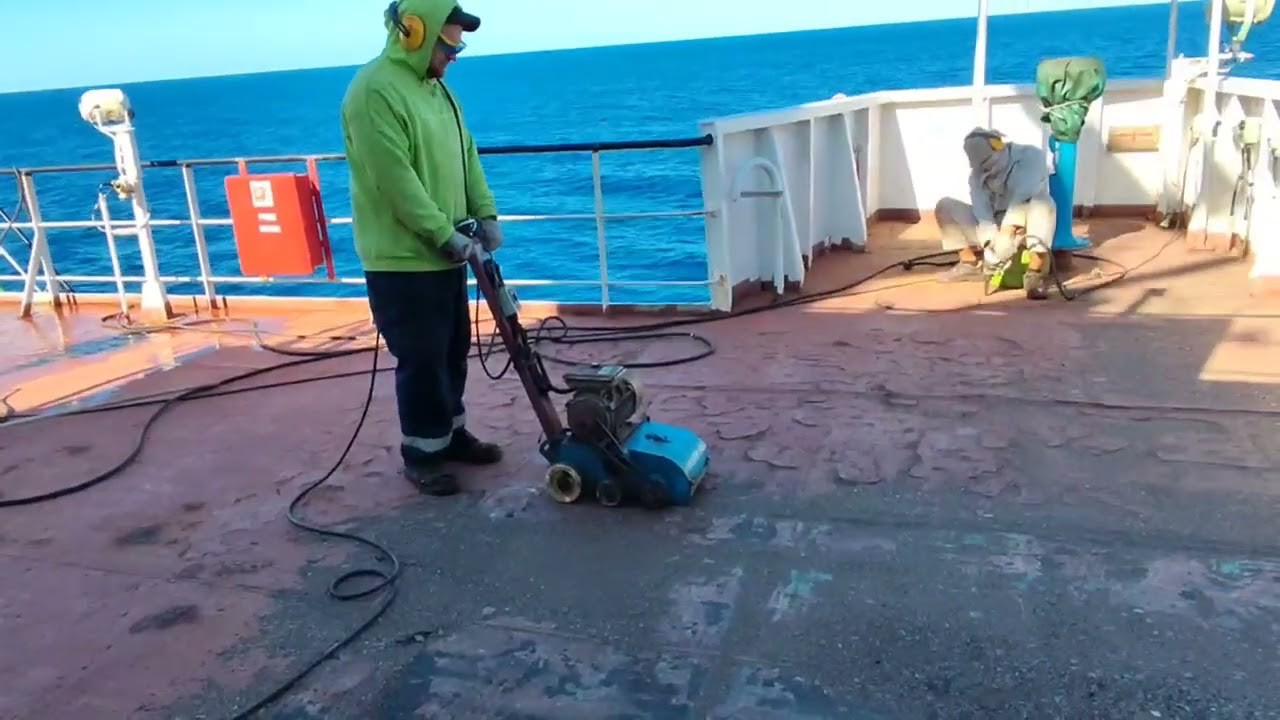- Position:
- 2nd engineer
Able seaman

Managing sea vessels is a complex and responsible process that requires significant efforts from the crew. Working at sea involves a variety of vacancies, regardless of whether we are talking about passenger cruise ships or tankers. The established hierarchy of subordination of positions ensures the necessary efficiency of seafarers, maintaining order and the required level of safety on the voyage.
All vacancies on a sea vessel can be divided into deck and engine jobs. In this case, we will not consider the positions of cook and bartender; their functionality is limited to providing household needs for the crew. The majority of the ship's deck crew are sailors. They, in turn, are divided into two categories: 2nd and 1st class sailors. The latter are also called qualified sailors, that is, they have certain work experience and skills in performing complex operations. To occupy this position, which provides higher pay, you must have the established experience and pass the necessary exams.
The deck crew on sea and river vessels is represented by officers and enlisted personnel. The officers are the captain and his assistants (navigators), as well as cadets undergoing training before receiving their first officer positions as 3rd or 4th assistant captain. The rank and file is represented by a boatswain, a donkerman and sailors of two classes.
Modern requirements for 1st class seamen or qualified seamen (AB) require them to have at least two years of experience on merchant ships and pass the relevant qualification exams, but there are various derogations, primarily depending on the size of the ship and its functionality purpose.
The origin of the term “Able Seaman” dates back to the mid-17th century, when the British Navy decided to single out the most experienced sailors and provide them with higher pay. For the first time such a position was recorded in documents in 1653, when England began reforming the fleet after its defeat at the Battle of Dungeness. Subsequently, this practice of separation began to be used on merchant ships, and the average difference in monthly wages was about 25%. A similar situation with wages continues today.
Job responsibilities

As a member of the deck crew, the sailor is responsible for maintaining cleanliness and order on the deck, performing work to remove rust and paint ship elements, participate in mooring operations, and so on. Taking into account the higher level of qualifications of 1st class sailors, they are involved in some work that young sailors are not allowed to do. This applies to keeping a watch on the navigation bridge at the helm and working with lifting and other mechanisms when performing mooring and loading and unloading operations.
In addition, qualified sailors, like other crew members, are subject to personal responsibilities within the framework of ensuring safety and combating survivability at sea in the event of emergency situations.
In general, qualified sailors are tasked with a significant amount of work, both requiring certain skills and knowledge, and menial operations associated with maintaining cleanliness and combating corrosion. Depending on the situation, 1st class sailors work a five-day work week or carry shift watches, and, if necessary, combine these two types of work schedule.
Basic requirements for 1st class sailors

The requirements for applicants for a job as a qualified seaman on a sea vessel vary significantly. First of all, this concerns types and classes of ships, as well as the requirements of national legislation. Previously, the minimum experience as a 2nd class seaman for promotion was 2 years, but today there is no uniform standard and the required qualification may vary even between companies. If we talk about the basic requirements, they boil down to the following:
- Having a minimum experience as a 2nd class seaman of 6 months or more. In this case, you can count on a promotion on the vessels of the fishing and auxiliary fleet. As an alternative, it is possible to have less work experience in a previous position, but subject to completion of sailing practice on training ships, where training in technical and rescue work was conducted.
- For regions with special conditions of navigation and work on offshore drilling rigs, the minimum work experience in the fleet must be at least 12 months. At the same time, national legislation may establish its own, more stringent requirements. One year is the minimum acceptable experience on ships of the coastal fleet operating within inland waterways with access to the sea, and after taking office, a qualified sailor can already be involved in keeping a watch at the helm under the direction of the ship's navigational staff.
- To work in certain regions of the world, 1st class sailors are required to have at least 18 months of sailing experience, and only work on ships with a displacement of 100 registered tons and above is taken into account. Work experience on small craft is not taken into account. In this case, a qualified sailor can already be appointed senior when performing certain maintenance work, receiving ordinary sailors (2 classes) under his command.
- Occupying a position on cargo ships of the merchant fleet without any restrictions on shipping areas requires an experience of three years or more. In this case, the seafarer’s skill level already allows him to be involved in the performance of important tasks, for example, reconciliation of navigation data when transferring ship control to offline mode. Accordingly, the level of wages for such sailors is significantly higher.
When considering candidates for vacancies on a marine vessel, the size of the vessel, its purpose (passenger or cargo vessel), as well as the actual level of skills and knowledge in the field of deck work on ships are taken into account. A condition for promotion is the presence of recommendations from the captain under whose leadership the person worked in the previous position.
Qualification of 1st class sailor

Naturally, to work at sea as a 1st class sailor, it is not enough to have only the above experience. Candidates for promotion are required to pass several tests and examinations during which he must prove that he has the necessary theoretical and practical knowledge and skills for promotion.
The purpose of the testing is to determine the person's ability to perform additional job duties assigned to a qualified seaman, such as standing watch at the helm or using lifting gear. Traditionally, significant attention during the inspection is paid to the issues of ensuring safety at sea, fighting fires, water ingress and other emergencies, including the use of individual and collective life-saving equipment.
For merchant seamen working on ships in international navigation, one of the mandatory exams is to test their level of English language proficiency.
Safety at sea is one of the main components of the work of seafarers, this is especially important for 1st class sailors who stand watch on the navigation bridge at the helm, monitoring the environment and potential dangers. Accordingly, he is responsible for saving the lives of other crew members.
In the process of passing the qualification exams for a qualified sailor (1st class), it is required to demonstrate the skills of controlling a ship at the helm and the ability to handle life-saving equipment (launching boats). Other skills tested during the exam include knowledge of the theory of the structure of a ship and professional terminology, knowledge of the basics of operating a ship and ship mechanisms within the scope of management, the ability to tie knots, and so on.
Taking into account the presence of a greater amount of responsibility and the presence of certain specific knowledge, the wages of a 1st class sailor are significantly higher than that of an ordinary sailor, which is a serious incentive for professional development and occupation of this position by ordinary members of the deck crew. In the future, a qualified sailor, having obtained the necessary practical experience, has the ability and is ready for further training, can continue to move up the career ladder, taking the position of boatswain (senior over all sailors on the ship) or donkerman (responsible person for organizing loading/unloading).
- Position:
- Chief engineer
- Position:
- Electrician engineer
- Position:
- 2nd engineer
- Position:
- Electrician engineer
